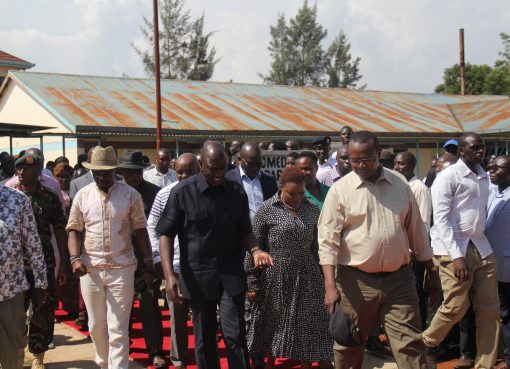The Agricultural Development Corporation (ADC) has rolled out a training programme for Artificial Insemination (AI) service providers and farmers on successful insemination as a way of boosting production of quality dairy beef and leather products in the country.
The initiative that has so far covered 27 counties is further encouraging small holder farmers to embrace better livestock breeds that could guarantee high returns on economic value.
The training has seen farmers taught best practices in dairy and beef animals management, including quality bookkeeping.
While disclosing that the ultimate goal of the initiative was to ensure the distribution and use of superior genetic breeding material to all the 47 devolved units, ADC Board of Directors Chairman Dr. Abdillahi Alawy noted that AI is a delicate art and science and many times veteran farmers and inseminators get it wrong.
Speaking in Nakuru, Dr. Alawy noted that the livestock sub-sector in Kenya accounts for Sh200 billion of the country’s economy annually, adding that there was need to enhance technology to increase its contribution to the Gross Domestic Product.
He added that adoption of modern technology and increased uptake of AI services would see more women participate in livestock rearing, thereby improving the economic standards of the society as a whole
Dr Alawy explained that good weight was critical in breeding. He pointed out that many farmers called in the inseminator to perform the service before the animal hits the ideal weight which leads to failure in AI.
“We are training farmers that the ideal weight before the animal is served depends on the breed. For Friesian heifers, they are served at weight of 300 kgs while Ayrshire and Guernsey heifers at 280kgs. Jerseys should be served after attaining a weight of about 270 kgs,” he stated.
The Chairman noted that ADC’s Sh1 billion bull semen collection centre in Endebess centre was using modern technology that allowed quality semen to be collected and well stored.
Dr. Alawy disclosed that the centre collects 600,000 semen straws per year to cater for the high demand from farmers.
This is the second semen collection centre after another one in Kabete. The Kabete collection centre, dubbed the Kenya Animal Genetic Resource Centre, has been operational since independence and has a capacity to collect 500,000 straws of semen annually, which was far below the annual demand of about 2 million straws.
Previously, the corporation embarked on bench-marking with countries such as France, Netherlands and South Africa to enhance semen collection.
ADC Acting Managing Director Dr. Wilson Tonui said they were determined to have farmers and AI service providers put AI services in order while insisting on adoption graded cows by small holder towards yielding milk, beef and leather products that would compete with the local and regional markets’ demand.
To contribute to the growth of Kenya’s economy, Dr. Tonui said the livestock industry has to turn to modern technology of producing and utilizing quality semen that would ensure continuous and sustainable quality breeds.
Dr. Tonui said their mission was to support families so that they could have breeds that increased communities’ and the country’s livestock value chain through technology.
The Acting MD said besides teaching farmers to adopt modern dairy and beef animal husbandry, they were also training them on feed formulation, disease and pests’ control as well as vaccination programmes.
For a successful conception from AI, the technology has to be right and the effectiveness of this was in the hands of the inseminator and timing by the farmer, he added.
Dr. Tonui indicated that semen quality contributes 25 per cent of milk volume whereas herd management contributes 75 per cent of milk production.
“If the semen used for breeding is of poor quality, it means the farmer will have to contend with reduced milk and beef production even if he manages the animal to the best standards,” he said.
By Esther Mwangi and Dennis Rasto




